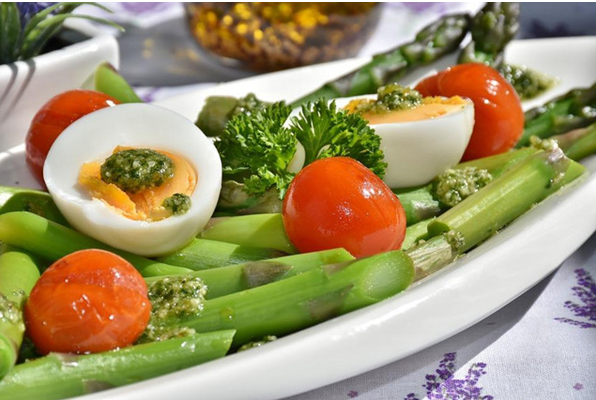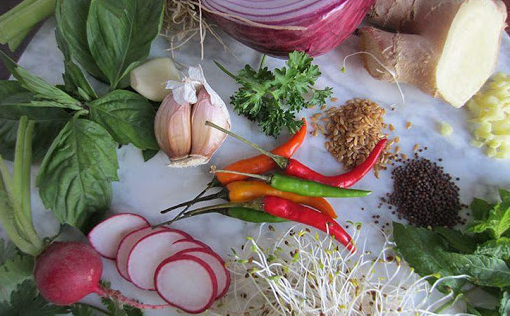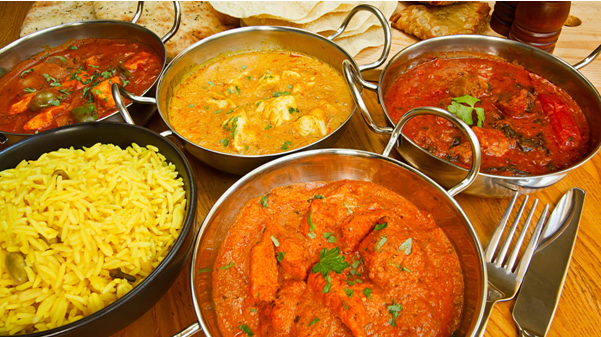India is one of the countries in the world with the most vegetarians per capita. To some extent, this is necessary due to the warm climate, but it is also deeply rooted in the local culture.
Fresh plant foodallows us to satisfy our appetite in an appropriate and useful way without overloading our metabolism. They are rich in vitamins and even dull the need for harmful foods with strong artificial flavors. So it turns out that the more vegetables we eat, the better.
But are all vegetables equally good for us? Most of us have noticed that even after a long period of adherence to systems and methodologies for proper nutrition, sometimes we just find ourselves stuck in the early stages and make no progress. This is because all vegetables are good, but we need exactly a certain type of energy and specific substances for our body to function properly.
One of the things that distinguishes Ayurveda from Western science is that, according to its understanding, we need to show moderation not only with regard to obviously harmful products.Did you know, for example, that eating potatoes and onions increases vata dosha? Tomatoes provoke the increase of coffee dosha, and cabbage increases both cotton wool and coffee energy in our country. On the other hand, the mostly vegetable (vegetarian) diet is super suitable for people with a pie constitution that needs reassurance.
Different vegetables have their own characteristic profile. In Ayurveda their qualities are determined by their taste, aftertaste, structure, impact. Check your innate energy constitution beforehand to find out if a vegetable or plant is right for you.
There are relatively simple ways to understand this. But in order for our food to be as consistent as possible with our nature, we need to know not only how we are predisposed, but also the current status of our constitution.
It may not be in its inherent state, ie. to be out of balance. In such cases, it is often enough to just realize our condition and change our diet to start seeing results immediately.
Read our tips and find out if you are interpreting your healthy vegetable diet correctly:
- Zucchini – their taste is bitter-sweet. They are ideal for raw consumption in salads, as well as for grilling, cooking, etc. You can make risotto with zucchini and a lot of spices or soup seasoned with dill and basil. However, it is recommended to eat as many fresh vegetables as possible in the Ayurvedic diet. Ideally, pass them raw through a pasta machine, thus getting vegan spaghetti for your salad.
- Carrots – and Western science has long proven that they are an incomparable source of vitamins A, B and K. Ayurveda advises to eat raw carrots whenever we need fast energy. In addition, they have the wonderful property of purifying the blood. Unfortunately, people with sugar sensitivity should avoid it. Carrots should not be eaten at lunch.
- ArtichokeOne of the foods that has miraculous detoxifying properties is artichoke. It is still little known in our country, but it continues to enter and we will see it in the markets more and more often. However, as a side effect in some people it causes gas.
- Spinach.You can add a little fresh raw spinach to your salad, but only if you are sure that your doshas are in complete harmony. This is necessary because spinach has the ability to accumulate all three types of life energy. If you have kidney stones, it is recommended to take this vegetable only after heat treatment.
- Nettle – Ayurveda does not miss the healing properties of this stinging and unfriendly type of plant. Although the sensation of contact with it is burning, the consumption of nettle has a cooling effect on the body. Nettle stimulates the increase of vata dosha, but has a calming and very beneficial effect on pita and kafa constitutions, if they tend to accumulate or go out of the norm.
Nettle is richest when it is fresh and young. If you love this plant, but due to imbalance of the three doshas it is contraindicated, you can eat it scalded with hot water in small quantities.
- Eggplant– it should not be consumed lightly by people who have increased coffee or pita dosha, because it stimulates them excessively, while reducing the level of cotton wool.
- Asparagus. If kafa dosha is strong in you, emphasize asparagus – green, red (purple in color) or white. Keep in mind that this vegetable has a diuretic effect and helps us to fight swelling and water retention. For this reason, asparagus is a great addition to our detox program.
Eating avocados is good for vata and pita doshas. As it is quite greasy, it should generally be avoided by people in whom kafa dosha tends to go out of balance. At the same time, however, it can be and a perfect substitute for foods with high artificial fat, which we would like to limit. That is why it is very popular with vegans.
- Mushrooms.Another non-fruit we will mention are mushrooms. Although they do not belong to the plant family at all, they are also considered a vegetarian food that we can eat as an ingredient in salads. The nature of fungi is very similar to that of their natural habitat – the soil. This is the perfect food for us if we need to calm our nerves.
According to Ayurveda tomatoes and potatoes should be avoided in the evening meal. The same goes for radishes.
Ayurvedic cuisine offers many ways to process and consume our vegetables. They can be eaten raw or prepared with understanding and love for food by specialized chefs who know its laws. Over time, we can even learn to prepare many of our own salads and vegetable dishes in Ayurveda.
If you do sports or yoga regularly, you will feel that most of the side effects of eating foods that are not suitable for your dosha will soon decrease. Physical activity and a harmonious lifestyle help us to overcome the limitations of our body and spirit , so move as much and often as possible!






0 Comments